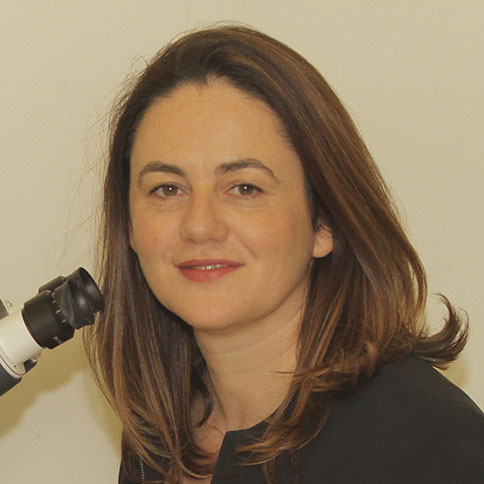Dr. Eilon Shani
Scientific Overview:
Plant growth and development is mediated to a large extent by hormones. Plants regulate hormone response pathways at multiple levels including biosynthesis, metabolism, perception, and signaling (1-3). In addition, plants exhibit the unique ability to spatially regulate hormone distribution ( 4, 5). This ability is illustrated most clearly in the case of auxin (!AA). The combined activity of auxin influx and efflux carrier proteins generates auxin maxima and local gradients that inform developmental patterning. The regulation of the cellular localization of PIN-FORMED (PIN) efflux transporters determines the direction of auxin flow from one cell to another ( 6, 7). Until recently, little was known about the transport mechanisms and the distribution patterns of hormones other than auxin. These are exciting days for the plant hormone community as novel gibberellin (GA), abscisic acid (ABA), and cytokinin (CK) transporters have recently been identified (8-14) joining earlier findings on auxin transporters (15, 16), all are members ofNPF, ABC, or PUP families. My research group and others identified the NPFs as the first GA transporter in plants 14• Although our studies suggest that individual NPF and ABC genes have specialized functions, genetic analyses of the family have been limited by the scarcity of loss-of-function phenotypes. The major reason for this is that plant genomes are highly redundant. There are huge numbers of genes encoding NPF and ABC transporters (53 and 120, respectively, in Arabidopsis) that exhibit high redundancy despite diverse substrate specificity of the encoded proteins. This redundancy, with over 80% of all protein-coding genes belonging to families, illustrates the huge challenge to the field of plant genetics in general and to the study of hormone transport specifically. On top of that, certain transporters, such as some NPFs, can transport multiple hormone substrates (GA, ABA) generating a highly robust system that is unique and interesting but puzzling (J 2, 14, 17). Furthermore, transporters with high specificity for conjugated hormones, which must balance the subcellular active hormone pools, have not been identified.
We plan to address the burning questions that emerge from this recent progress in the field, all of which are challenging due to the functional redundancy of plant hormone transporters: 1) Do closely related NPF and ABC members transport multiple substrates and what is the biological importance of such activity? 2) Why have GA exporters, which must exist to enable the movement of the hormone, not been identified? 3) Are there specialized hormone transporters for conjugated hormones and what is their contribution to the rapid hormone response at tissue and subcellular levels? 4) Do subcellularly localized hormone transporters affect the hormone response and what is subcellular hormone map?
The major goal of the lab goals is to investigate the robust and specialized functions of plant hormone transporter families. In our lab we will are using multiple-targeted artificial microRNAs and CRISPR technology to establish Arabidopsis and tomato populations, respectively, deficient in multiple redundant hormone transporters. First stage, we generated a unique targeted forward genetic approach that bypasses functional redundancy in plants with a dynamic screening range. This allows us to first target the NPF and ABC families in Arabidopsis and tomato. At a second stage, we are using targeted high-throughput screens to identify developmental redundant phenotypes. These loss-of-function phenotypes combined with hormone-mediated physiological assays, analyses of transporter expression patterns and localization, and biochemical transport assays allows us to study NPF and ABC hormone transport mechanisms, identify missing exporters, and evaluate subcellular localization of hormone transporters. Our work in the past three years has identified novel putative GA, CK, IAA and ABA hormone transporters, including CRISPR application in tomato that recovered striking GA-mediated growth defects when six novel GA transporters were knocked out in tomato, thus emphasizing the outstanding strength of our screens. Having the novel CRISPR multiple-targeted platform at our disposal is a significant achievement, since it not only contribute to our understanding of hormone transport mechanisms but will also serve as a scientific breakthrough to overcome functional redundancy in all fields of plant biology and agricultural breeding.
In addition, there is growing amount of evidence suggesting that hormone transporters localized on intracellular compartments actively regulate the subcellular distributions of hormones and hormone intermediate (J 8-20). One of the labs aims is to obtain a deeper understanding of hormones distribution in snbcellular resolution, and address the question of quantitative endogenous hormone levels in different compartments. To profile cellular hormone metabolites within discrete organelles, we are using an innovative strategy to isolate distinct cellular compartments and reveal the complete profiles of active hormone and hormone precursors and conjugates in organelles. This approach will generate the first subcellular hormone localization map and will enable the quantification and characterization of the in vivo activities of known and unidentified subcellular hormone transporters. We believe that our studies will lead to a fuller understanding of hormone transporter functions and specialized subcellular activities.


































































































































































































































































































































































































